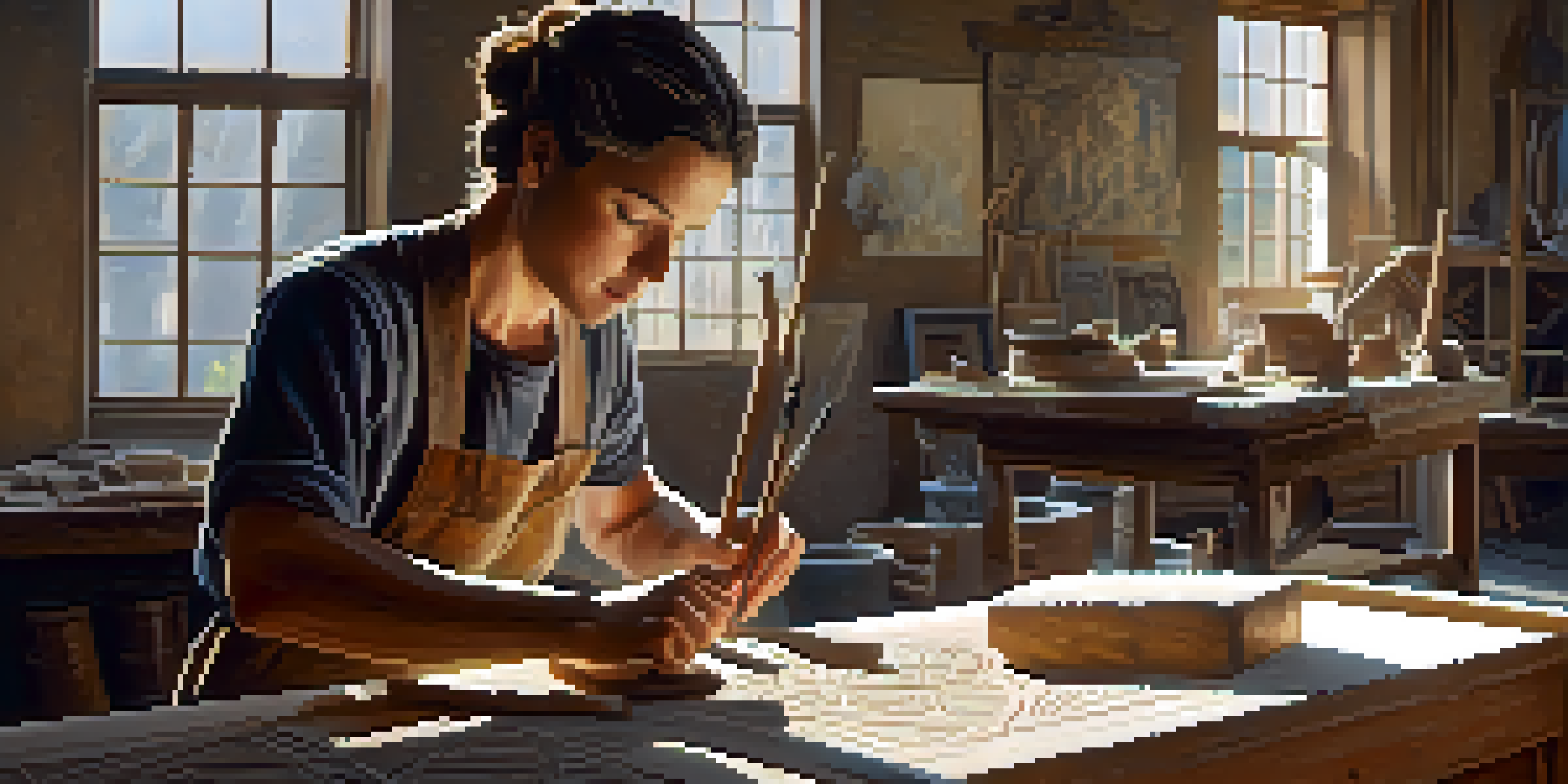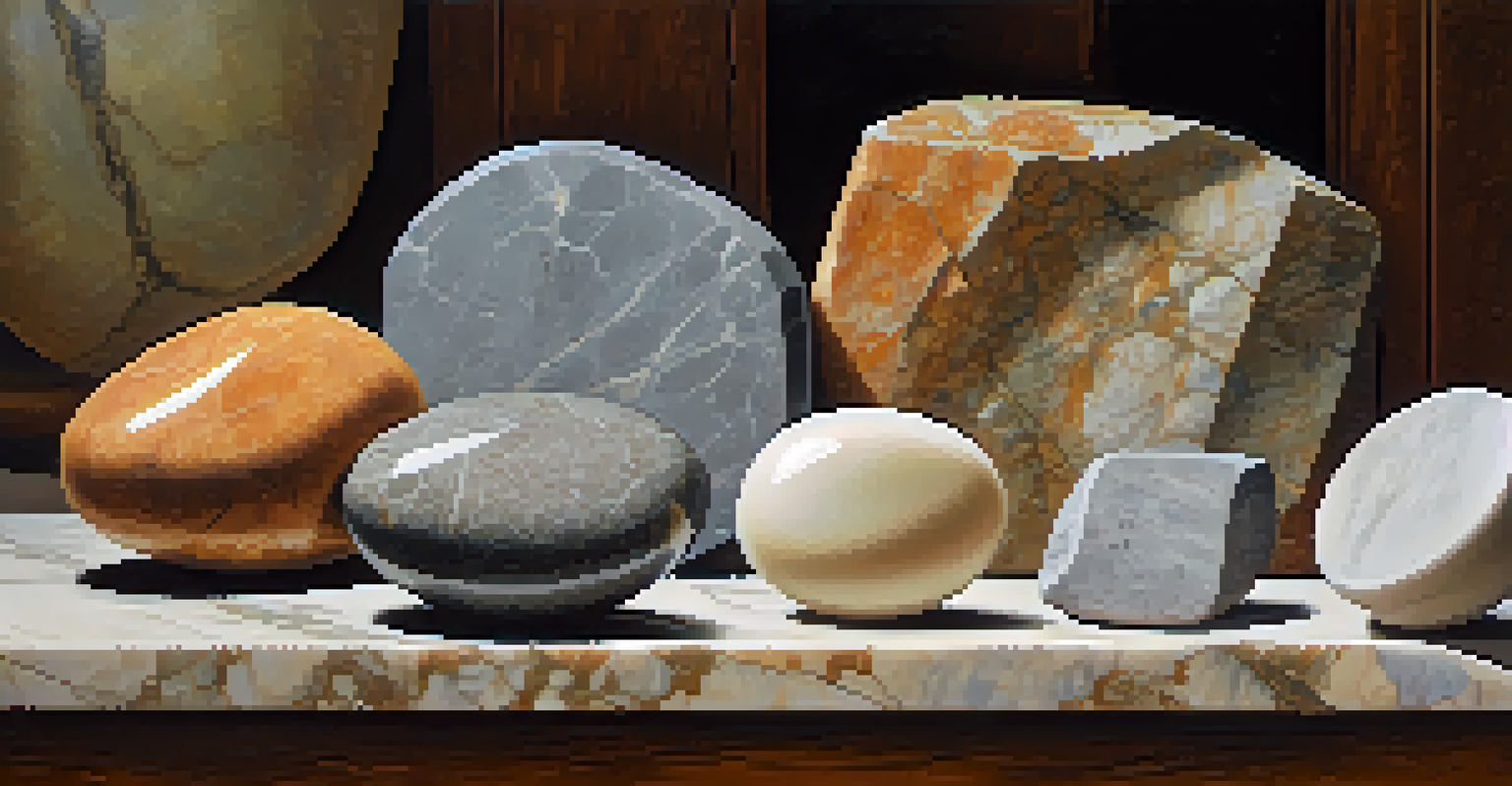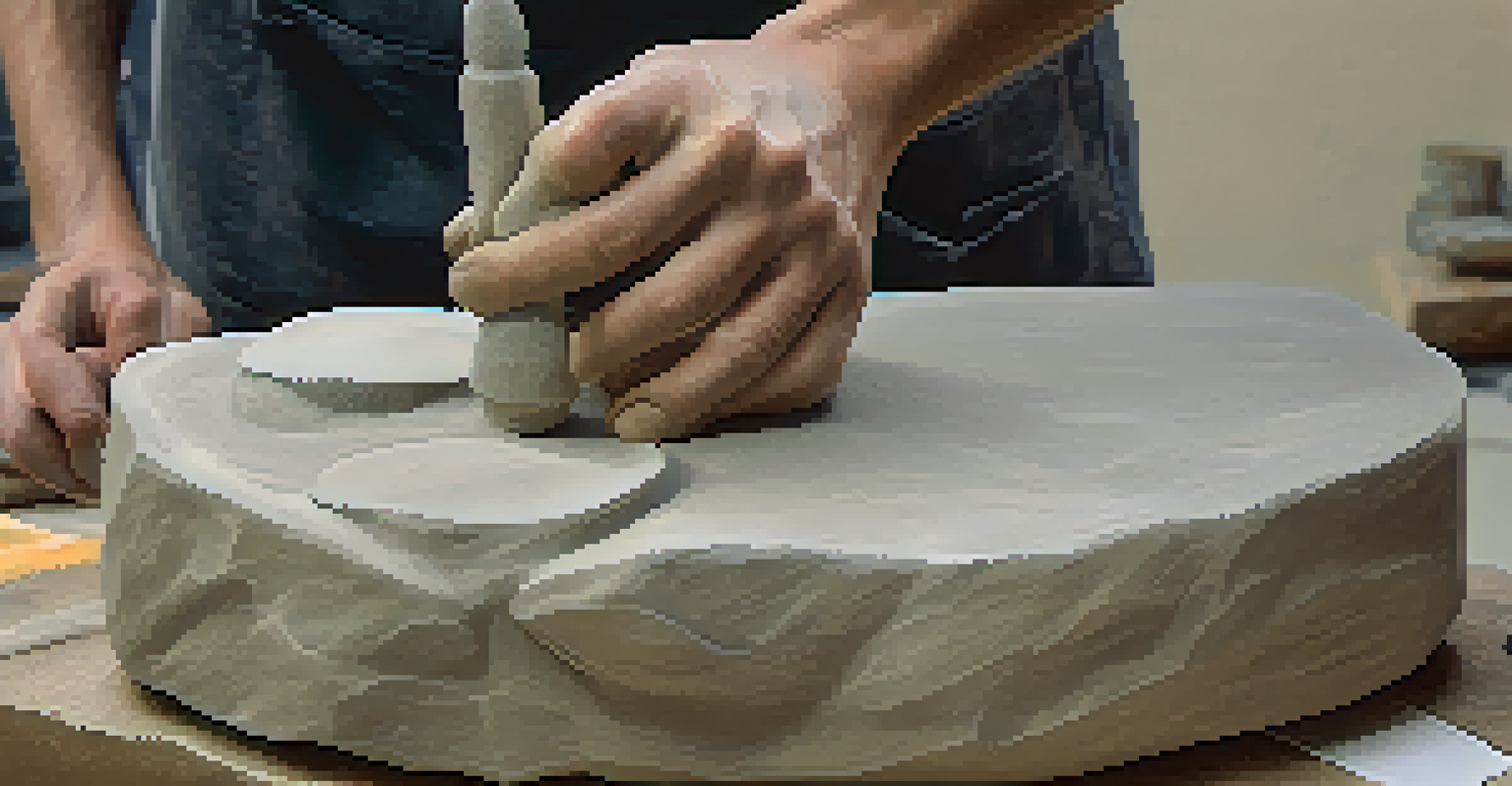Techniques Unique to Stone Carving: A Deep Dive

Understanding the Basics of Stone Carving Techniques
Stone carving is more than just chipping away at a rock; it's an intricate art that requires both skill and technique. The process usually begins with selecting the right type of stone, as different materials respond uniquely to tools and methods. Common choices include marble, limestone, and granite, each offering a distinct texture and color. This foundational choice sets the stage for the entire carving process.
Every artist dips his brush in his own soul, and paints his own nature into his pictures.
Once the stone is selected, the artist typically sketches their design, which serves as a guide throughout the carving. This initial blueprint is crucial because it helps the artist visualize the final piece and plan each step accordingly. From this point, the actual work begins, and the techniques employed can vary widely based on the desired outcome and the artist's personal style.
Techniques such as direct carving, where artists work directly on the stone, or additive sculpting, where materials are added, provide different results and experiences. Understanding these basics lays the groundwork for exploring more advanced techniques unique to the stone carving world.
Direct Carving: The Artist's Intuition at Work
Direct carving is a technique where the artist carves the stone without prior models or molds. This method emphasizes the sculptor's intuition and creativity, allowing them to respond to the stone's natural characteristics. By embracing the stone's unique features, artists can create more organic and expressive forms, leading to one-of-a-kind sculptures.

One of the charms of direct carving lies in its unpredictability; the stone often reveals surprises that can change the course of the work. For instance, an unexpected vein or a flaw in the stone might inspire a new direction or detail in the sculpture. This spontaneous interaction between artist and material adds a layer of depth to the final piece.
Artistry and Technique in Carving
Stone carving combines artistic intuition with various techniques, allowing artists to create unique sculptures from different types of stone.
Moreover, direct carving often requires a deep understanding of the stone itself, as artists must adapt their techniques to suit its hardness and texture. This technique exemplifies the intimate relationship between the artist and their medium, showcasing how creativity can flourish in the face of challenges.
Pointing Machine: Precision in Stone Carving
The pointing machine is a tool that enhances precision in the stone carving process. This method involves measuring a small model of the sculpture and then transferring those measurements onto a larger block of stone. It ensures that the proportions remain accurate, which is particularly helpful for larger pieces.
Art is not freedom from discipline, but disciplined freedom.
Using a pointing machine allows artists to maintain their vision while minimizing the risk of mistakes during the carving process. Instead of relying solely on intuition, artists can follow a more systematic approach, which can be especially beneficial for complex designs. This technique is often favored for monumental sculptures, where accuracy is crucial.
However, while the pointing machine aids in precision, it can also remove some of the spontaneity that comes with direct carving. Artists must find a balance between accuracy and creativity, often leading to innovative adaptations of the traditional technique to suit their personal style.
Using Tools: Hammers and Chisels in Stone Carving
At the heart of stone carving are the tools that sculptors wield, most notably hammers and chisels. These instruments come in various shapes and sizes, each designed to achieve specific effects on the stone. For instance, a point chisel is used for roughing out shapes, while a flat chisel creates smoother surfaces.
The choice of tools significantly impacts the carving process, as each tool offers different levels of control and technique. A skilled sculptor knows how to select the right tool for each stage of their work, whether they are removing large amounts of stone or refining intricate details. This mastery of tools is what transforms a rough block into a refined masterpiece.
Role of Tools in Stone Sculpture
The choice of tools, such as hammers and chisels, significantly influences the carving process and the final outcome of the sculpture.
Moreover, the rhythm of striking the hammer against the chisel can be almost musical, embodying the relationship between the artist and their craft. This tactile experience is not just about precision; it's also about the emotional connection that develops during the creative process.
Chiseling Techniques: Carving Styles and Patterns
Chiseling techniques play a crucial role in defining the style and texture of a stone sculpture. Artists often employ various chiseling patterns to create depth and interest in their work. For instance, a 'bush-hammered' finish gives the stone a rough, textured appearance, while a 'polished' finish results in a smooth, reflective surface.
These techniques are not only about aesthetics; they also convey the artist's intent. Different textures can evoke different emotions, transforming a simple sculpture into a powerful statement. For example, a rough surface might suggest strength and durability, while a polished finish could represent elegance and beauty.
Furthermore, chiseling techniques can also be combined, allowing artists to experiment with contrasts and create dynamic visual effects. This versatility is what makes stone carving such a rich and varied art form, offering endless possibilities for creativity.
Finishing Touches: Polishing and Detailing Techniques
The finishing stage of stone carving is where the magic truly happens, transforming a rough sculpture into a polished work of art. Polishing techniques, such as sanding and buffing, enhance the stone's natural beauty and bring out its colors and patterns. This step requires patience, as it often involves multiple rounds of sanding with progressively finer grits.
Apart from polishing, detailing techniques such as engraving or texturing add depth and character to the piece. These details can tell a story or highlight specific elements of the sculpture, making it more engaging for viewers. The artist's attention to these finishing touches often distinguishes a good piece from a truly exceptional one.
Cultural and Technological Influences
Stone carving is shaped by cultural traditions while also evolving through modern technology, creating a dynamic blend of past and present techniques.
Ultimately, this stage is where the artist’s vision comes to life, culminating in a piece that resonates with both the creator and the audience. The satisfaction of seeing a stone sculpture shine under the right light is an experience that every stone carver cherishes.
Cultural Influences: How Traditions Shape Stone Carving
Stone carving is deeply intertwined with cultural traditions, reflecting the values and history of the communities that practice it. Different regions have developed unique styles and techniques, often influenced by local materials and historical significance. For instance, ancient Egyptian sculptors used specific methods that were closely tied to their beliefs about the afterlife.
These cultural influences can also dictate the subject matter of sculptures, with some communities focusing on religious figures while others might celebrate nature or human forms. Understanding these traditions enriches the appreciation of stone carvings, revealing the stories they carry.

Moreover, as globalization continues to connect artists from different backgrounds, new hybrid styles are emerging. This blending of techniques and traditions leads to innovative approaches in stone carving, showcasing how art evolves while still honoring its roots.
The Future of Stone Carving: Technology Meets Tradition
As we look to the future, technology is beginning to play an increasingly significant role in stone carving. Modern tools, such as CNC machines and laser cutters, allow for precision and efficiency that were previously unimaginable. These advancements can help artists create intricate designs with remarkable accuracy.
However, this technological evolution raises questions about the relationship between tradition and innovation. Many artisans worry that reliance on machines could overshadow the tactile, hands-on experience that defines stone carving. The key will be finding a balance between embracing new tools while preserving the artistry and craftsmanship that are at the heart of this ancient practice.
Ultimately, the future of stone carving promises to be a fascinating blend of tradition and technology, offering exciting possibilities for artists to explore. As they navigate this evolving landscape, stone carvers will continue to inspire future generations with their creativity and skill.